Each year, Dartmouth secures numerous films from the Telluride Film Festival for exhibition at the College prior to their theatrical release. This tradition began in 1987 under the stewardship of Bill Pence—co-founder of the Telluride Film Festival and film director of Dartmouth’s Hopkins Center—who established a relationship between Telluride and the College that has lasted to this day.
Dartmouth’s “mini Telluride” saw its thirty-fifth-anniversary installment in late September. The seven films that follow are reviewed in the order in which they were exhibited at the College.
The Wonder, d. Sebastián Lelio
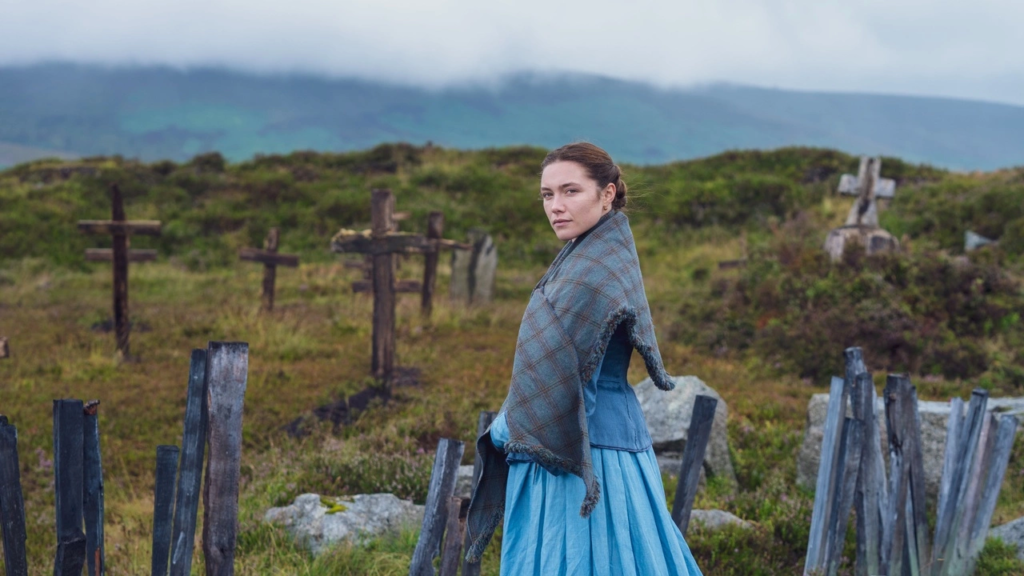

The Wonder is the first English-language feature from Chilean director Sebastián Lelio, and, while it is sporadically intriguing, its premise is weakly stitched together, and overall the film proves frustrating and incongruous. The Wonder stars Florence Pugh as an English nurse, Lib Wright, seconded to a small Irish village in the post-famine 1860s. She is tasked with observing what is variously described as a medical aberration and even a “miracle”: an eleven-year-old girl who has survived for months on end without apparently having eaten any food.
Despite what one might think given this background, I don’t feel that I am spoiling anything when I state that the famine plays hardly any role in the proceedings and has precious little narrative importance of which to speak. The motivation of the girl, Anna, for undertaking her fast has nothing to do with the recent crisis that has enveloped Ireland. Rather, Anna maintains that her fast is an expression of mourning following the death of her elder brother.
As to the specific reason for which Lib and a Catholic nun have together been summoned by the village elders, it’s to partake in a poorly defined “watch,” of a fortnight in length, over Anna—apparently to determine whether she is truly maintaining a fast. But the elders and Anna’s family, both essentially cultic in their extremist Catholicism, fully embrace the girl’s story as fact and as a form of religious valorization.
We, of course, know better from the start, as does Lib. Anna is being fed, somehow. And I think herein lies the central problem with the film. It’s a melodrama masquerading as a thriller, but it in no way indulges, to even the slightest extent, the possibility that there is truly something darkly mysterious at work. Nor do we have any questions, really, about what’s happening and why.
Half the film’s runtime is spent by the monotony of Lib attempting to participate in the “watch” and finding herself unable to do her job properly. She suffers from the interference of family members, a lack of support among the village elders, and the objections and delusions of the local physician (Toby Jones, doing his best impression of the Hammer actor Michael Ripper).
Given that the death of Anna’s elder brother is quickly established as the motivation for her fast, one wonders, again, what exactly it is that is transpiring for the bulk of the film’s runtime. And indeed, the film is often not so much engrossing as it is frustrating.
Repetitive, detailed sequences of eating—with all the noisy chewing, slurping, and cutlery clinking imaginable—are effective insofar as they distinguish the regularity of food preparation and monotony of eating customs as well as contrast Lib and Anna from one another. But the frequency with which such sequences recur, the principles of auteurism be damned, quickly proves tiresome.
The Wonder, adapted for the screen by Emma Donoghue from her novel of the same name, must be the most underwritten film that I’ve seen in a long while. An infinitude of plot holes with no acceptable answers can be found. Furthermore, when more context is finally given about the death of Anna’s brother, which context serves as the ostensible real reason for her fast, this is rushed and very poorly explained.
The film is ill served predominately by Lelio’s enigmatic direction. In attempting to prevent his film from being pigeonholed as, say, an historical thriller—that is, a mere genre picture—Lelio so strenuously avoids the trappings of that genre that he forgets what makes such films enjoyable in the first place.
That said, the acting is very strong, and the film possesses an exceptional cinematographic beauty that is its ultimate saving grace. Its brooding, gothic atmosphere is splendid, and this quality emerges in large part from some impressive set design.
The Wonder could have been much better had different choices been made, narrative and formal alike. As it is, the film is an underwritten and over-stylized work that has its moments but is at least as frustrating as it is pleasing.
Bardo, False Chronicle of a Handful of Truths, d. Alejandro G. Iñárritu
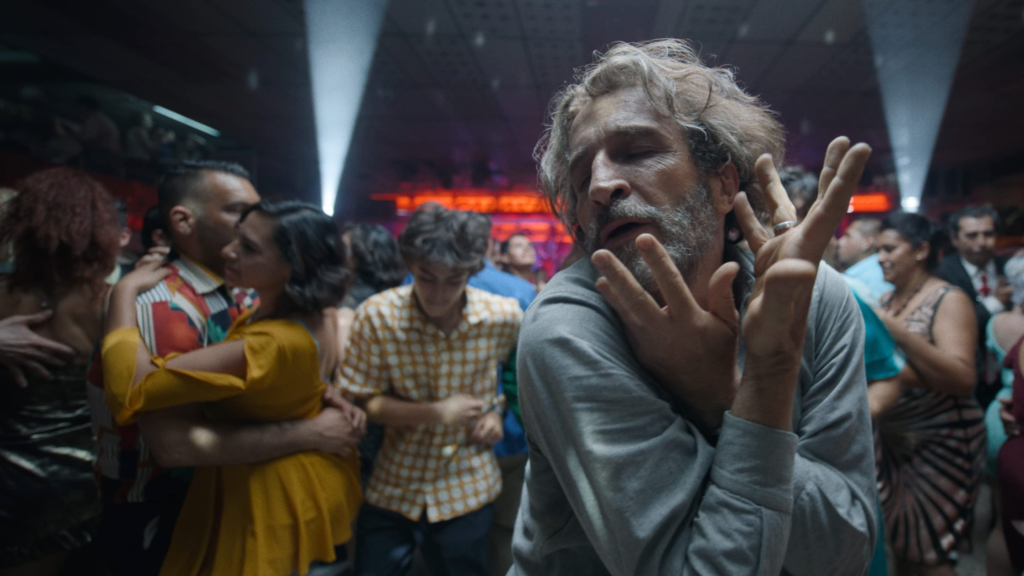

Alejandro G. Iñárritu’s Bardo is roughly three hours long—or was, anyway. The version screened at Dartmouth came right from Telluride and ran 174 minutes. Iñárritu has since shortened the film by 22 minutes (this is the version that was screened at San Sebastián) and has said that he intends to keep editing the film up until its theatrical release. If this is in fact his intention, I will take this opportunity to make a recommendation to Mr. Iñárritu: Please cut the film by another 90 minutes … at least. The potential remains for you to cut this monster down into a far shorter, far more palatable art film.
Bardo is brash, absurdist, self-indulgent, and utterly self-aggrandizing. Iñárritu, a five-time Academy Award winner, comes across as enormously pompous, an impression which I accredit primarily to his clear disregard for Bardo’s audience. The film embodies art for art’s sake to an extreme.
To be sure, the film is aesthetically worthy of merit. Its sustained camera movements, artful compositions, and use of light are visually striking and create among the most poetic images I have seen in recent cinema.
However, any sense of narrative is totally absent from the film. I conclude that Iñárritu is so in love with his images that he apparently neglected to write a screenplay, or otherwise completely ignored it, and that he did almost no trimming of his rough cut in the editing room. Iñárritu thus defies cinematic conventions—and, quite frankly, logic—by throwing images, many only imagined in the mind of the main character, at his audience and totally ignoring structure. I, for one, gave up looking for a plot, or even for links between scenes, about a third of the way through (that is, after one hour of hard work).
It is in this way that Bardo is utterly exhausting. The effort that must be put forth by the audience to try and construe and conceptualize the film is simply too much and too unrewarding. (Many in the audience were asleep by the end of hour 1 at the screening which I attended.) But of course, Iñárritu doesn’t care. He made this film for himself—and for certain high-falutin critics, which is to say basically the same thing.
In effect, Bardo is a work to which Iñárritu feels entitled after a string of critically acclaimed successes that netted him a host of awards. The film is his attempt to prove that he is an auteur of the highest order (as his contemporary Alfonso Cuarón did recently with the wonderful Roma), specifically in the tradition of Fellini and Godard. And in seeking to do so, Iñárritu ensures that Bardo comes across as empty and even artificial.
The film emulates Fellini’s 8½ by way of an autobiographical main character; and much critical attention has been paid to the way in which Iñárritu manipulates this character, using him as a conduit for whatever cinematographic or staging devices he so chooses. I should emphasize, though, that I see a more pronounced connection to Godard’s Weekend. Iñárritu is audaciously attempting to show that he can redefine the vocabulary of cinema, just as Godard did in his acclaimed 1967 film. But Iñárritu is not Fellini, and he’s not Godard. If anything, Bardo’s utter monotony—it is hardly a captivating piece of cinema—advances a convincing argument for why the vocabulary of cinema exists in the first place.
Women Talking, d. Sarah Polley
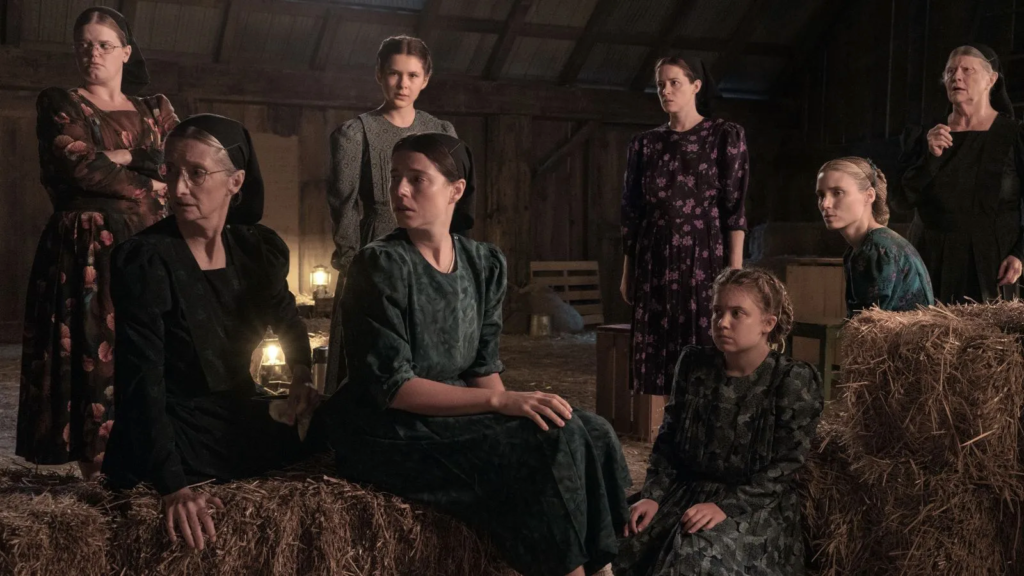

Sarah Polley’s Women Talking is an excellent film and one which is fueled by that rare combination of emotion and intellectualism. A masterful example of the power that lies in good ensemble acting, the film is sure to secure myriad nominations from AMPAS and other institutions for the powerful performances of such heavy-hitters as Jessie Buckley, Claire Foy, and Ben Whishaw—all three of whom, strangely enough (considering the film is set stateside), hail from the British Isles.
Polley’s film, inspired by real events, is set in 2010, in a Mennonite community that is in tatters following a campaign of rampant sexual assault perpetrated by a number of the men against women and children. When the men responsible are arrested, and the other men in the community leave to bail them out, the women of the community—in the men’s absence—select a small group from among their own to deliberate upon what they and their children are to do.
Polley wisely brings her film to life not by emphasizing broad concepts but by depicting individual personalities, which alternatingly clash, harmonize, and evolve. It is principally for this reason that Women Talking has been frequently described as a female version of 12 Angry Men. To be sure, there are parallels aplenty to be drawn, but I think the suggestion of such an equivalency is reductive. Polley’s film depicts a group that is substantively invested in its decision-making process from the start, and there is no one individual main character who perspicaciously guides the group towards a more thoughtful consideration of the circumstances.
Indeed, these women, assembled in a hayloft, consistently engage in a thoughtful discussion of their options: do nothing, stay and fight, or leave. The film, of course, is tinged with moments that are emotionally hefty and truly horrifying (the stories of assault are brutal to hear). However, it is rather incredible that the women’s progress in discussing their available options—as well as their views of moral justice, and how each of their own life histories informs the deliberative process at hand—typically exudes nonchalance, lightheartedness, and a remarkable sense of self-awareness, even metacognition.
Equally incredible is the key plot point that the women are uniformly illiterate. Minutes for their meeting, then, are taken by the one man remaining in the community, the schoolteacher. Whether he should contribute to the women’s deliberative process, and, if so, in what way, becomes increasingly important as the film progresses.
This is to say, despite the horrific, and pressing, circumstances which the women face, they variously intellectualize and moralize their situation. They speak in broad, experientially defined philosophical terms. The exchanges of dialogue are marvelous to behold.
I note that, to my mind (others will certainly feel differently), the film presents less a condemnation of Christianity as practiced by the Mennonites than a condemnation of the Mennonite power structure, independent of Christianity. The film actually valorizes Christianity to some extent, showing its power for unifying the women, who might argue with each other but can ultimately be united in prayer and song.
The film also reveals that the women are routinely oppressed within the Mennonite power structure in ways even exterior to the horrific sexual assault. It is this all-enveloping societal oppression that I think places the film squarely in the Me-Too era. The female characters are well written and well acted as individuals, yes, but they are also archetypes, emblematic of positions that can be adopted in the broader scheme of things. But the film renders its loaded character types very well indeed.
In terms of shot composition and cinematographic aesthetics, the film is not particularly interesting, and the color grading proves extremely distracting at times. (Cold tints and shades might be appropriate for a James Bond film, but, despite the presence of Ben Whishaw, such color grading is not justified in a pensive drama such as this.)
Women Talking is difficult to sit through owing to the horrific subject matter, but the film is so well executed that it’s well worth the effort.
Tori and Lokita, d. Jean-Pierre and Luc Dardenne
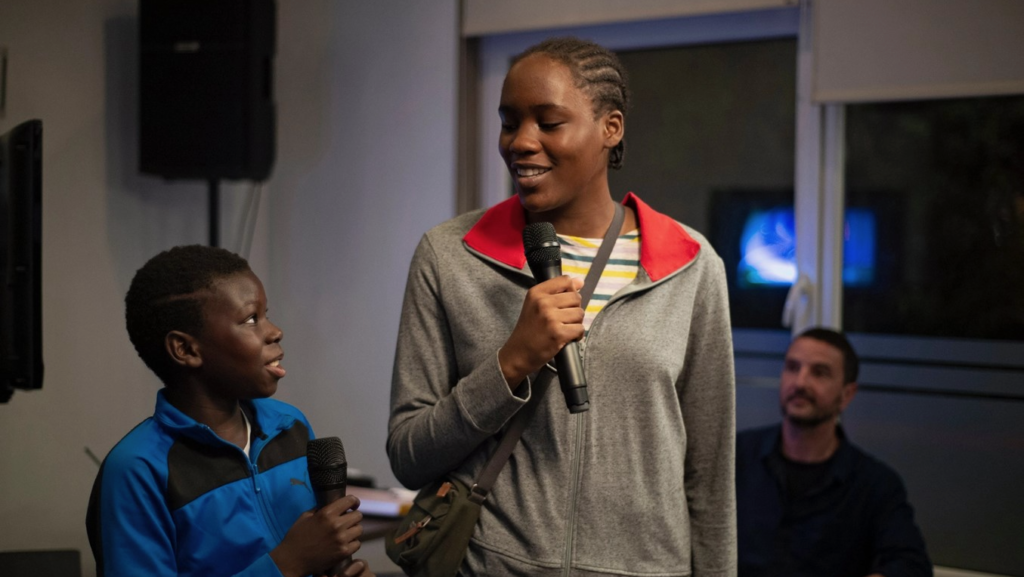

Tori and Lokita, the newest effort from the acclaimed Dardenne brothers, is a thoughtful and humane film, and it features a pair of winning performances from Pablo Schils and Joely Mbundu as the eponymous duo. However, the film is also remarkably casual in pace and mise-en-scène, which, while conveying a degree of realism (which is appreciated), indicates a certain randomness to proceedings that does not serve it well.
The film is about two African children, 11-year-old Tori (Schils) and 16-year-old Lokita (Mbundu), who have recently immigrated to Belgium, where they pose as brother and sister in an attempt to secure a legal-code advantage for Lokita. The two endure a litany of struggles, including with drug dealers and sexual abusers; they steadfastly—and heartwarmingly—support each other throughout these trials and tribulations.
In keeping with longstanding Dardenne tradition, the film starts in medias res. Other filmmakers would have begun on a more expository note, but the Dardennes have no interest in such an approach. For the Dardennes, character traits and backstory will invariably be revealed by way of a purposive incrementalism, spread throughout the film.
To the Dardenne brothers, as well, actions speak volumes louder than words. The starring duo are, indeed, often simply observers. And from the start, they are also mere objects in a naturalistic whirl from which they cannot escape. It’s all rather Dickensian, really.
If anything, the desire which Tori and Lokita share to secure a fruitful, peaceable existence only further draws them in, leading to still worse circumstances. The exploitation to which the two are habitually subjected is enormously frustrating, and in this way the film foregrounds, against a realistic backdrop, the inevitability of the horrible events which befall them.
The Dardennes have helmed many a film in which young actors take leading roles, and in Tori and Lokita their direction of Schils and Mbundu is especially admirable. Schils, in particular, makes quite an impression as the quiet but inventive and kind-hearted Tori.
The ending is movingly tragic, but the events leading to it don’t come across as particularly urgent. Such an effect was doubtless in part intentional, but I think the film could have benefitted from some degree of suspense.
Wildcat, d. Trevor Frost and Melissa Lesh
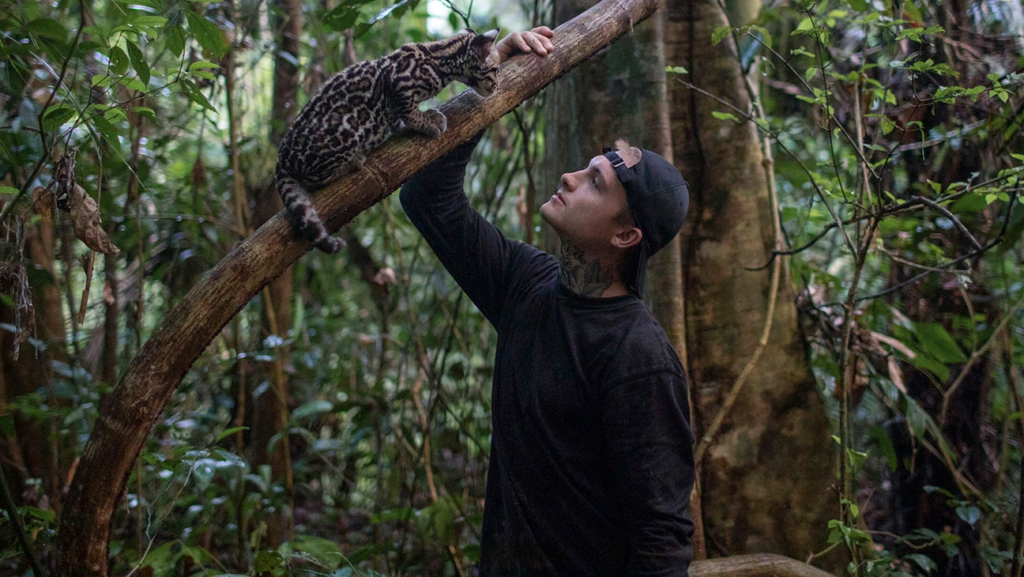

Wildcat has been described as a wildlife documentary, but it really has much more to do with the lives of its human characters than it has with that of the South American ocelot which is its nominal focus. And the film is not simply a poor man’s (read: documentarian’s) Born Free. The troubled personal lives of its two main (human) characters—Harry and Samantha—take center stage, even beyond the realm of the Peruvian Amazon in which can be found the ocelot in question, Keanu.
Harry Turner, a former British Army soldier in Afghanistan who suffers from PTSD, has found a new purpose in life: rescuing and raising wild animals, specifically carnivores, at risk of poaching. I confess to having pondered the significance of the fact that he works with predatory animals—I think it fits him well. It is recuperative, I would think, for a former soldier to work with a powerful creature on whom he feels he is exerting a positive, nurturing impact.
In any event, Harry has established a professional and personal relationship with Samantha Zwicker—a biologist and wildlife rehabilitation specialist who leads carnivore-rescue projects—with whom, in Wildcat, he raises an ocelot cub.
They, and ultimately a team of professional filmmakers, film their interactions with the cub, as they build environments in which to raise it and train it to survive in the jungle on its own. Dangers naturally emerge in the Amazon, but the predominantly point-of-view, handheld cinematography does the film no benefits in seeking to convey any sense of reality in such sequences. The “danger,” in fact, seems somewhat benign and perhaps even a bit spurious.
The real emotional drama and indeed danger lies with Harry, whose suicidal tendencies stem from deep trauma. He often becomes depressed and winds up cutting himself. Samantha’s tortured reactions are truly heartwrenching.
We learn as well that Samantha has a traumatic past all her own, owing to an abusive father. As for Harry’s family, his relationship with them is a good one, which makes his drive to suicide all the more disheartening. In the end of the film, a return trip that he makes to London is extremely moving.
I will add that the relationship which Harry and Samantha share is somewhat ambiguous, and the filmmakers err in failing to clarify this point. There are other missteps, too: the particulars of the pair’s mission in the Amazon seem to change or are otherwise difficult to follow; and Harry’s departure from the Amazon towards the end of film seems arbitrary to a certain degree, which suggests poor explanation on the part of the filmmakers.
Overall, though, Wildcat offers some marvelous animal footage and some compelling human drama.
Tár, d. Todd Field
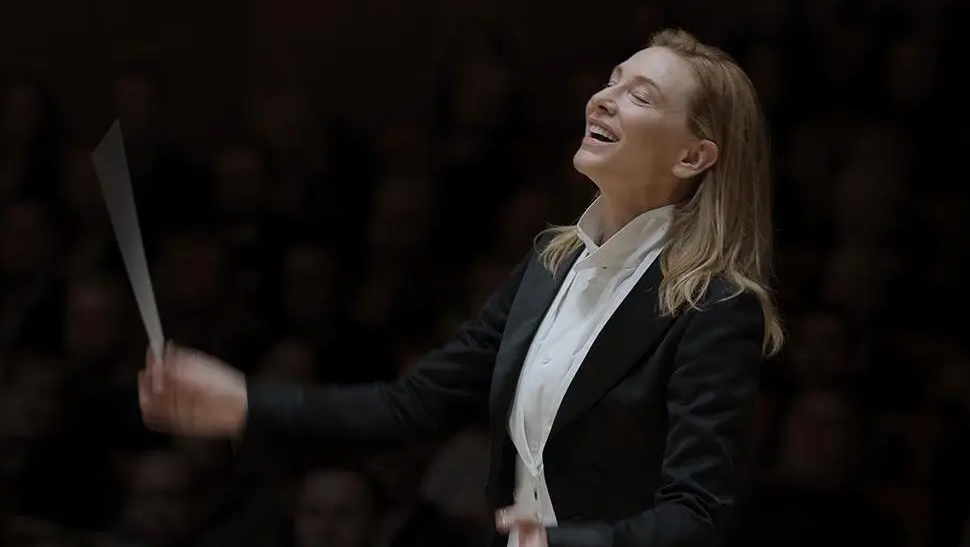

Todd Field’s Tár is an unabashedly strange film, and it embraces its strangeness to the fullest extent possible. It has many chapters—geographically, it stretches from New York to Berlin to China—and features an extraordinarily complex, tour-de-force performance from Cate Blanchett that is almost certain to win her a third Academy Award. Excepting the fact that I can’t unhear Katharine Hepburn whenever I hear Cate Blanchett (and indeed Blanchett portrayed Hepburn in The Aviator), I have always considered Blanchett to be one of the finest actresses of her generation, a reputation which she fully validates with her complex portrait of the titular Lydia Tár.
Lydia is a brilliant orchestral conductor who isn’t afraid to speak her mind, but she’s also demanding, vindictive, and more than willing to play favorites—perhaps in some less-than-reputable ways. Tár, then, is a character study and one which really makes no ultimate judgment about its eponymous subject despite her evident failings. The film is, essentially, a single joke that sustains itself for nearly three hours and produces hardly any laughs. But my gosh, it’s morbidly fascinating.
Also, I should mention that, for a film whose director has been planning it for over a decade, Tár feels extremely modern, almost to the day. It so effortlessly represents, satirizes (from many directions), and responds to cancel culture—and in such often absurd ways—that it feels highly attuned to our current moment.
The film is also remarkably obscure in its asides and references. For instance, it spits out the names of composers, orchestras, conductors, and variegated orchestral phraseology like a machine, of which I, an unabashed music enthusiast, caught maybe half.
As for the plot? Yes, I’ve neglected that. Well, suffice it to say, the film jumps around quite a bit. But it centers on Lydia’s desire to conduct Mahler’s Symphony No. 5 with the Berlin Philharmonic, of which she is the conductor. However, her efforts to capture the splendor that used to be—for which she pines, and which she so greatly admires—renders her incompatible with the modern world. Lydia is effectively a relic, embodied in a thoroughly modern personage. And she is vindictive, at that.
Tár is, above all else, a sweeping piece of cinema, an epic not because of pictorialism and a depiction of enormous events but due to its larger-than-life main character. In this way, Tár truly charts unexplored territory, and it does so astoundingly well. The only thing more absurdist and impressive than Lydia is the film itself, which is the boldest and most impressive cinematic experiment that I have ever seen in a theater.
Icarus: The Aftermath, d. Bryan Fogel


Bryan Fogel’s 2017 documentary feature Icarus captivated audiences and won that year’s Academy Award for Best Documentary Film. It examined doping in cycling races but, most prominently, featured to great effect one Grigory Rodchenkov, Russia’s anti-doping chief. Icarus depicted Rodchenkov as he turned whistleblower, fled to the U.S., and testified that Russia had systematically engaged in a doping regime so as to cheat in the 2014 Winter Olympics.
Fogel’s newest effort, a follow-up entitled Icarus: The Aftermath, is even better than its predecessor. It picks up where the first film left off and succeeds, with much brilliance, in portraying Rodchenkov’s person—moral, intellectual, corporeal—against a broad backdrop of historical Soviet and present-day Russian politics.
The film depicts almost five years of the expatriate hiding from Russian assassins and seeking legal asylum. To protect Rodchenkov’s safety throughout this sequel, Fogel only interacts with him directly on occasion, typically talking with him over the computer. A cameraman placed with Rodchenkov and his security team films the group as it moves from one location to another, in which process he captures Rodchenkov musing about his predicament and (in very prescient fashion) Russia, but also philosophizing in the Orwellian tradition about totalitarian governments that disguise and then deny the truth.
Rodchenkov’s reflections on his own history with doping, as an athlete and then a young technician, are rather wonderfully depicted by way of stylized animation. Also critical are his interactions with Fogel, which reveal the deep personal connection that the two share. Their exchanges also demonstrate a marvelous rapport—they are amusing and charming together, and an undeniable positivity pervades their interactions.
Fogel’s documentary is so riveting, then, because of the many hats, representing many different genres, that it manages to wear at once: those of a character study, an espionage thriller, and a legal drama.
That the film succeeds so overwhelmingly, however, is due to its unfailing commitment to the former—the character study. To this end, Rodchenkov is intelligent, funny, enthusiastic, and philosophical, even as he is hunted down by assassins and worries about both his family in Russia and his future, in the witness protection program, in the United States. His personal moral awakening, which he accredits to Fogel, is that which the film foregrounds most in Rodchenkov’s interactions with the filmmaker—each man says the other saved him, and this moved me deeply.
Icarus: The Aftermath is possessed of an exciting and affecting story, and the film is quite brilliantly imagined.
A note on star ratings: I grew up reading Roger Ebert’s and Leonard Maltin’s film reviews, in which they appraise films out of four stars. Nevertheless, when I wrote my film reviews for Dartmouth’s Telluride exhibition last year, I sought to comply with more modern trends by employing a five-star scale. This year, however, I have decided to privilege my own sanity and return to the system with which I am most familiar. By reducing the number of evaluative increments, the four-star scale enables me, I think, to better translate my written assessments into tangible, capsule-form ratings. Specifically, I note that my use of four stars allows me to more easily distinguish between half-star intervals.

Be the first to comment on "Review Reviews: Telluride Comes to Dartmouth—The Film Festival’s 35th Anniversary at the College"